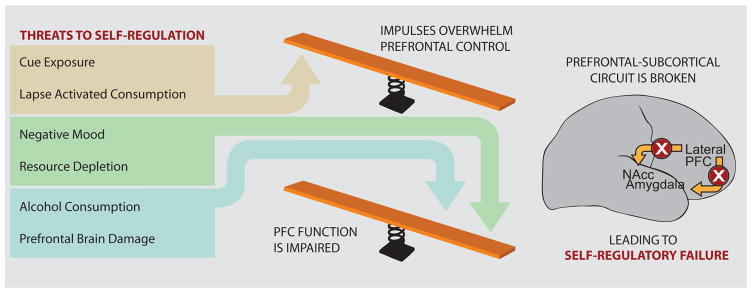Figure 2.
Schematic of a balance model of self-regulation and its failure highlighting the four threats to self-regulation identified in the text and their putative impact on brain areas involved in self-regulation. This model suggests that self-regulatory failure occurs whenever the balance is tipped in favor of subcortical regions involved in reward and emotion, either due to the strength of an impulse or due to a failure to appropriately engage top-down control mechanisms.

